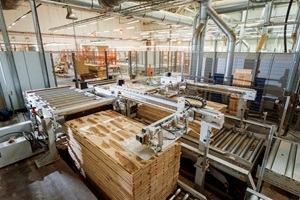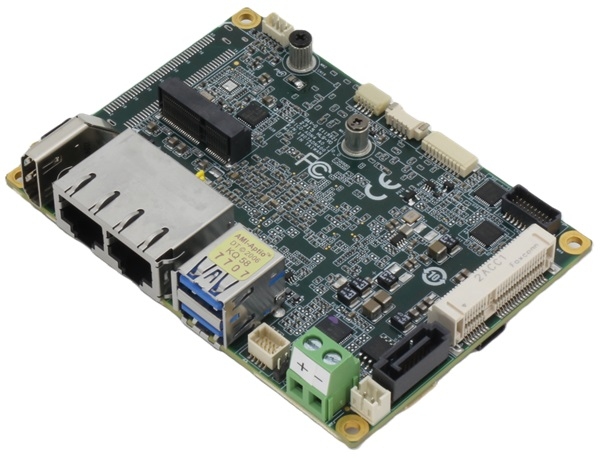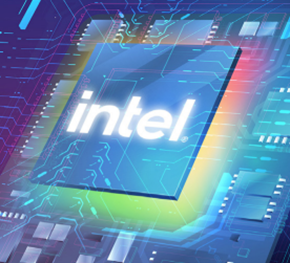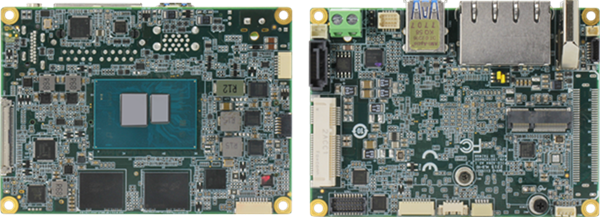突破傳統工藝:利用AAEON PICO-ADN4單板電腦於木工自動化中創造高效率與低能耗的生產環境

Faced with the prospect of automating their furniture assembly line to enhance productivity and minimize human error, a high-quality wooden furniture manufacturing company explored various options, not only among embedded solutions providers but also different hardware options. The challenge lay in finding a solution that would automate the production line efficiently without posing deployment challenges due to size, cost, or excessive power consumption.
In a strategic move, the company opted for a single board computer (SBC) over larger system-level alternatives, envisioning a more discreet integration into their existing factory infrastructure. After careful consideration and evaluation, the furniture manufacturer concluded that AAEON's PICO-ADN4 was the perfect fit for the stringent requirements of their project. This decision highlighted a preference for a streamlined, cost-effective solution that could seamlessly integrate into their existing processes while delivering the automation capabilities essential for optimizing their assembly line.
Project Requirements
Due to the intricate processes involved in manufacturing furniture, the company required a solution capable of reliably issuing control commands to ensure each unit that left the assembly line met consistently high standards. Consequently, accuracy was a priority, which meant that latency during any stage of the manufacturing process could have costly effects on the whole production line.
The automatic woodworking machine was designed to operate for extended periods, so the customer wanted to minimize unnecessary costs by opting for a power-efficient solution. However, given the complexity of the application, the board in question still needed to efficiently handle data from multiple sources, process it, and issue prompt instructions to other machinery.
Lastly, the deployment environment for the board posed challenges, as the facility housed machinery with diverse power requirements, presenting a risk of potential damage to the Single Board Computer (SBC) due to power surges. Additionally, the application's surroundings required careful consideration. Although automating the manufacturing process made the byproduct disposal more efficient, the presence of contaminants such as sawdust, wood chippings, and dust could not be entirely avoided. Therefore, it was imperative that the chosen product would not be affected by its harsh deployment setting.
Why the PICO-ADN4?

Intelligent, Interactive Interfaces

In the realm of serial communication with other machinery within the application's ecosystem, the PICO-ADN4 showcased versatility by employing a range of protocols, such as RS-232/422/485. This enabled the programming and precise control of parameters for motor drives, controllers, and various components within the woodworking machinery of the factory. Notably, the RS-485 interface supported multi-drop configurations, allowing multiple devices to communicate on the network and effectively reducing the necessity for additional Ethernet connections.
Further enhancing the programming and control aspects of the woodworking machinery, the board featured interfaces such as SMBus, GPIO, and BIO. The customization of the device's BIOS specifically for these interfaces facilitated the establishment of motion control, ultimately elevating the accuracy of the tasks. This comprehensive integration of communication interfaces showcased the adaptability and tailored functionality of the PICO-ADN4 in addressing the specific needs of the woodworking application.
Low Power Processor Platform

AAEON satisfied the customer’s request for power-efficiency, with the PICO-ADN4-A10-0001 SKU being equipped with the 6W, 2-core Intel® Processor N50. The platform's utilization of Intel 7 lithography, known for enabling the production of smaller and more power-efficient transistors, contributed significantly to reduced power consumption and heat generation. Notably, the processor's integration of Intel® Turbo Boost Max Technology added a layer of flexibility in resource allocation, allowing for dynamic adjustments based on the processing demands of specific tasks and achieving a maximum single-core frequency of 3.40 GHz despite its low power foundation.
While the choice of the CPU might not have been tailored for applications necessitating parallel processing of substantial data volumes, the Intel® Processor N50 proved adept for the automatic woodworking application's workload. With a focus on tasks that didn't demand a high number of parallel processing units, the processor showcased its adaptability by adjusting its clock frequency to meet the application's more demanding tasks and seamlessly reverting to a lower frequency when not required. Furthermore, the PICO-ADN4's high-bandwidth LPDDR5 system memory played a crucial role in expediting data transmission. The support for Intel® Time Coordinated Computing (TCC) technology further elevated the board's capabilities, enabling precise time synchronization between assembly line machinery and data traffic, ultimately ensuring real-time performance without latency.
Environmental Resilience

To safeguard the board from power supply fluctuations, the customer opted to incorporate a DC-DC converter, an optional accessory for the PICO-ADN4, extending the power input range from 12V to 9V ~ 36V. Complementing this power management feature, the PICO-ADN4 was fortified with environmental specifications ideal for its deployment setting. The most notable of these was its fanless heat dissipation, which solved the issue of dust and debris accumulation commonly encountered by fan-assisted embedded boards, enhancing the system's reliability and longevity in a challenging operational environment.
A subtle yet potentially significant concern for this application pertained to the machinery's vibration levels, posing a risk of loosening SODIMM modules from the board's clips. While this occurrence might not necessarily compromise the board's integrity, it could lead to increased maintenance frequency and the loss of productivity.
In a strategic move, the PICO-ADN4's integration of soldered LPDDR5 not only bolstered the board's stability but also mitigated this potential challenge. This design choice ensured that the application benefited from enhanced stability compared to similar boards available in the market, all without compromising the performance of the PICO-ADN4. This dual emphasis on power supply resilience and hardware stability showcased the board's meticulous design approach, addressing both environmental and mechanical considerations for optimal operational efficiency.
Impact

AAEON’s PICO-ADN4 markedly improved the customer’s manufacturing process, elevating precision and removing human error from the equation. Faced with the intricate processes inherent in crafting furniture, the project necessitated a solution capable of issuing real-time control commands to uphold consistently high production standards. The PICO-ADN4 not only met this demand but excelled through its incorporation of multifaceted communication protocols.
Due to being designed to operate effectively in a tough environment, the PICO-ADN4 also showed itself to be an asset to the company’s financial commitment, reducing maintenance costs due to its fanless design and eliminating the prospect of interrupted production for such servicing. This benefit is compounded by the ongoing savings when the application’s power consumption is considered. Making use of a low power, yet highly effective single board ensured all of the aims of the application were achieved while keeping power consumption low, therefore reducing the total cost of automation.
Beyond its prowess in operational precision, the PICO-ADN4 proved to be a valuable asset to the company's financial commitment. Operating effectively in challenging environments, the board's fanless design not only reduced maintenance costs but also eliminated the risk of interrupted production for servicing. This financial benefit was further compounded by the board's energy-efficient operation, contributing to ongoing savings. The strategic use of a low-power yet highly effective single board ensured the achievement of the application's goals while simultaneously keeping power consumption at a minimum, thereby reducing the overall cost of automation. In essence, the adoption of the PICO-ADN4 not only elevated operational efficiency but also demonstrated a commitment to financial prudence and sustainability in the automated manufacturing landscape.
